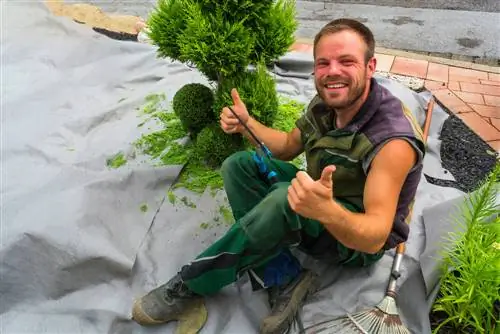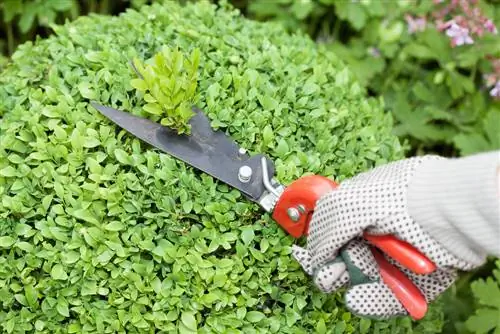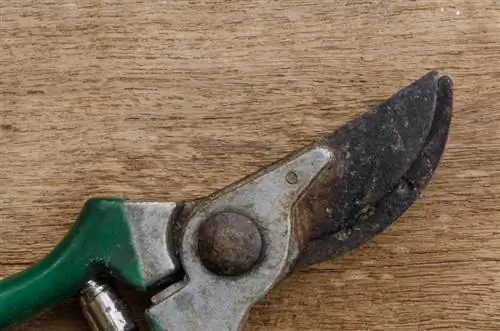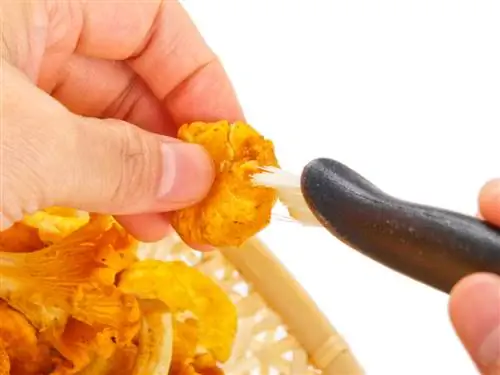- Author admin [email protected].
- Public 2023-12-16 16:46.
- Last modified 2025-01-23 11:21.
Between April and September, boxwood topiaries in particular must be cut regularly. This produces a lot of very fine clippings, which should always be removed to protect against infection. With a suitable mat, you'll be done tidying up in no time.

Which base makes sense when cutting boxwood?
To easily remove boxwood clippings, use a suitable base, such as a topiary cloth, an oilcloth tablecloth, a plastic tarp, pond liner, an old shower curtain, a thick cotton tablecloth or a discarded duvet cover. The clippings can be easily saved for disposal.
Why do you have to put away the clippings at all?
Of course, you can simply leave the fine shoot tips and leaves lying around or just sweep them up with a rake or rake and just collect them roughly. However, this is dangerous: Due to the boxwood's susceptibility to fungal diseases, clippings must always be cleared away. There are potentially pathogens and pest eggs in it, which can last for an extremely long time - and infect the otherwise he althy box again and again. In particular, boxwood shoot dieback and the stubborn and difficult to control boxwood borer represent a major problem, to which numerous boxwood plantings have now fallen victim.
How to save yourself the hassle of collecting clippings
For this reason, it makes sense to remove potentially infectious clippings as a source of danger. To ensure that this can be done without much effort, place a suitable base under the boxwood to be cut. You can purchase so-called topiary cloths in stores, which have a hole in the middle and often have handles at the corners. Place them around the box, cut it and then simply lift the cloth at all four corners. However, it is even cheaper because you can make such a base yourself from different materials. Suitable examples are:
- a discarded oilcloth tablecloth
- a plastic tarpaulin
- pond liner left over from pond construction
- an old shower curtain
- an old tablecloth made of thick cotton fabric
- a discarded duvet cover
For a solitaire, cut the cloth of the appropriate size (better too big than too small so that nothing falls out!) on one side to the middle. In the middle, cut out a small circle into which the trunk of the boxwood will be enclosed. The edges of the fabric can be folded up and secured at the corners with clothespins, for example.
How you can also remove the clippings
Instead of collecting the small parts on a surface and then disposing of them, you can simply vacuum them up with a leaf vacuum - or, if the box is in the middle of a lawn, run over it with the lawn mower. In this way, you kill two birds with one stone: the lawn is mowed and the clippings are also removed.
Tip
He althy boxwood can be wonderfully composted. For this purpose, you should chop up thicker branches and twigs and mix the boxwood cuttings with lawn clippings or similar. Boxwood rots very slowly and therefore needs an accelerator.






